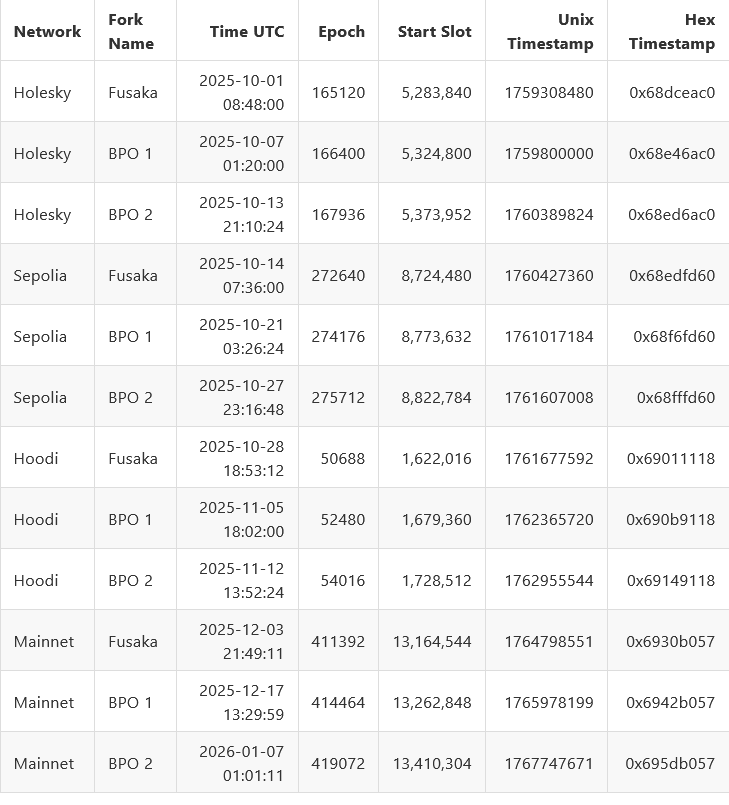Ethereum’s Fusaka Hard Fork To Go Live On December 3
Ethereum’s core developers have selected early December for the tentative launch of the network’s next major hard fork, dubbed Fusaka, which aims to scale the network and make it more efficient.
While the Fusaka upgrade will go live on Dec. 3, the increase in blob capacity will take place two weeks after, putting it around Dec. 17, followed by another blob capacity hard fork on Jan. 7, 2026.
Both the blob capacity hard forks will more than double the current blob capacity, according to Ethereum researcher Christine D. Kim.
Before the upgrade goes live on the Ethereum mainnet, three public testnets will be conducted between early October and mid-November.

“The initial conclusion is that we can go ahead with a Max blob count of 15 for BPO1 [Blob Parameter Only] and Max blob count of 21 for BPO2. There are a total of 5 BPOs planned for Fusaka, so we can ensure mainnet scales a lot – safely,” Ethereum developer community ethPandaOps said in an X post on Thursday.
BPO (Blob-Parameter only) forks only change the parameters pertaining to blob targets and limits. These hard forks do not require any updates from the client-side.
Blobs store large data sets offchain, which makes layer-2 networks more efficient while decreasing the cost of transactions.
Blob usage has been constantly inching upward since the Dencun upgrade went live. Currently, the average blob count per block stands at 5.1, while the figure was a lot lower at 0.9 in March 2023, according to a Dune dashboard.
On Monday, the Ethereum Foundation announced a four-week code audit program, with $2 million up for grabs to developers that discover and disclose vulnerabilities in the Fusaka codebase.
Fusaka’s launch follows the Pectra upgrade on May 7, which raised the validator staking limit, introduced account abstraction, and made layer-2 networks more efficient.
Ethereum’s exit queue hits an all-time high
The amount of ETH unstaked by Ethereum’s validators hit an all-time high, as 2.6 million ETH, worth $12 billion, entered the exit queue last week.
Related: Ethereum turns 10: Here’s how its booms and busts shaped history
Meanwhile, the queue to enter the staking pool was at a four-week low amid fear of selling pressure from the ETH that will be unstaked.
Currently, the wait time for the exit queue stands at around 43 days, according to the Ethereum Validator Queue.
On Thursday, Ethereum co-founder Vitalik Buterin argued that the protocol’s lengthy exit queue existed for a reason and that lowering the limit would make the chain “much less trustworthy.”
Buterin’s comments were made in response to Galaxy Digital’s head of DeFi, Michael Marcantonio, calling the exit queue length “troubling.”
Magazine: Bitcoin mining industry ‘going to be dead in 2 years’: Bit Digital CEO


